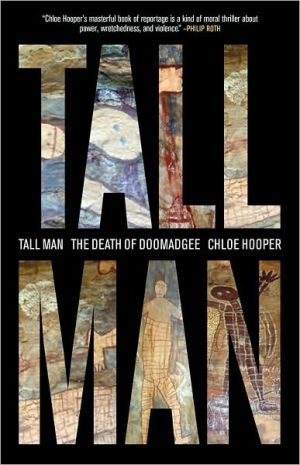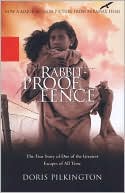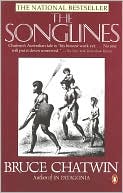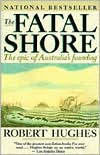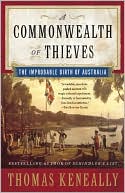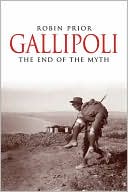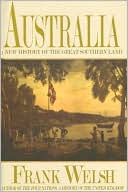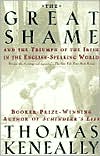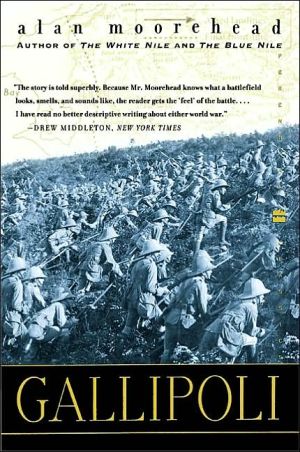Tall Man: The Death of Doomadgee
In 2004 on Palm Island, an Aboriginal settlement in the "Deep North" of Australia, a thirty-six-year-old man named Cameron Doomadgee was arrested for swearing at a white police officer. Forty minutes later he was dead in the jailhouse. The police claimed he'd tripped on a step, but his liver was ruptured. The main suspect was Senior Sergeant Christopher Hurley, a charismatic cop with long experience in Aboriginal communities and decorations for his work. \ Chloe Hooper was asked to write...
Search in google:
In 2004 on Palm Island, an Aboriginal settlement in the "Deep North" of Australia, a thirty-six-year-old man named Cameron Doomadgee was arrested for swearing at a white police officer. Forty minutes later he was dead in the jailhouse. The police claimed he'd tripped on a step, but his liver was ruptured. The main suspect was Senior Sergeant Christopher Hurley, a charismatic cop with long experience in Aboriginal communities and decorations for his work. Chloe Hooper was asked to write about the case by the pro bono lawyer who represented Cameron Doomadgee's family. He told her it would take a couple of weeks. She spent three years following Hurley's trail to some of the wildest and most remote parts of Australia, exploring Aboriginal myths and history and the roots of brutal chaos in the Palm Island community. Her stunning account goes to the heart of a struggle for power, revenge, and justice. Told in luminous detail, Tall Man is as urgent as Bury My Heart at Wounded Knee and The Executioner's Song. It is the story of two worlds clashing -- and a haunting moral puzzle that no reader will forget. The New York Times Book Review - Alison McCulloch Hooper followed the case and its main characters for two and a half years, and she does their complexity a remarkable justice…And though there is no resolution, she makes of it all an extraordinary whole.
\ ON AUSTRALIA'S REMOTE Cape York Peninsula there are spirits with long, thin arms and long, thin legs that move unseen in the night to do evil. By day they slide back into the country's sandstone cliffs, living in the cracks. On rock faces, in gullies and gorges and caves, their stretched-out bodies are painted in red ocher with allseeing white eyes. \ To find them I flew and drove to the tiny town of Laura, in Far North Queensland, and followed a guide along narrow walking tracks thousands of years old, up a steep escarpment.At the top, the guide yelled out a greeting to the spirits. Otherwise, he said, they would come and cut out our kidney fat.\ It had been years since anyone had visited this place. Recent rains had left the saplings vivid green, and the ferns that grew from rocks made hanging gardens. This was a wet-season camp, a network of boulders and caves whose walls and ceilings were covered in layers of paintings maybe fifteen thousand years old: kangaroos, crocodiles, emus, dingoes, yams and their twisting roots, weapons, beehives with swarms of bees, stars; all the things of the cosmos drawn so they might multiply and release the bounty of the land.\ Along one cliff wall, the orange and brown hues of the sandstone morphed into more recent figures: paintings of two white men lying down. They wore red half-moon caps and blue shirts, and were naked below their waists, their skin a pale, creamy ocher. Both men had rifles. They were police. This site was used for sorcery, purri purri.\ On a cave wall a kilometer or so away, the guide had shown me a scene painted in the late nineteenth century of a European wearing jodhpurs and boots. He was midair, vainly holding to the reins as he was thrown from his horse. A rifle flew from his hands. A naked woman lay on the ground. Perhaps the man had stolen her; it was common on the frontier. Whoever painted this wanted to kill the European, to "doom" him, as the self-taught ethnographer W. E. Roth termed it a century ago. A man could be doomed to be struck by lightning or crushed by a falling tree, though it would not be the lightning or the tree that killed him, but the curse. The Aborigines called it "singing" him.\ Sorcery paintings became more prolific while northern Australia was being colonized. In 1872 -- nearly a hundred years after Captain Cook claimed the continent for Great Britain -- gold was discovered in a valley near Laura.When local Aborigines speared the Europeans' stock or pilfered their supplies, white settlers and then troopers -- white and black -- set out from the town in "dispersal" parties. The Aborigines tried to use purri purri against the whites' rifles, magic objects that could produce thunder and lightning. They tried to sing the guns and to sing the gun's "fruit" or "kernels" -- the bullets -- so they wouldn't fire straight. But the place-names marking Cape York's red-dirt roads tell the story: Spear Creek, Rifle Creek, Double Barrel Creek, Revolver Creek. A photograph of the Laura Native Mounted Police from around 1880 shows five Aboriginal troopers in their uniforms with peaked caps and rifles, flanking their tall white commander. Some traditional Aborigines lived like fugitives in these hills until the 1920s, but influenza and the troopers kept coming their way.\ I stared at the blue-shirted men on the cave wall and thought that the motivation to paint them must have been strong. Blue pigment is very rare: someone had gone to great trouble to find and mix these paints. The smaller of the figures had two blue dots for eyes, the larger one brown-dot eyes and a cross that counted for a nose and mouth.\ The second man was two meters tall and horizontal. Under his shirt he was reptilian.His pale skin had been crosshatched like a crocodile's -- every part of it, including his penis. Below him a great serpent, painted in red ocher, reached four meters along the cliff face. The snake's tongue was striking the sole of the man's bare foot. This snake was the instrument of doom. Inside its body were stenciled handprints, like signatories to an execution. "I curse your foot, I curse your leg, I curse your heart, your shoulder, your neck," the guide said quietly. This was not a generic trooper. The people who painted him knew him. They knew his height. They knew the color of his eyes.\ On the slow walk back down, nothing stirred in the bush. I asked the guide if he knew Chris Hurley, a white policeman who had once worked in the near deserted town of Laura down below.Hurley was popular in the Aboriginal communities and frontier towns where he chose to serve.He'd been decorated for his bravery. And he was tall, I said, two meters tall like the figure on the cave wall.\ For two years I had been following his story: one morning, two hundred miles away on Palm Island, he'd arrested an Aboriginal man for swearing at him. Forty minutes later, the man, Cameron Doomadgee, was dead on a cell floor with injuries usually seen in fatal car accidents. Hurley claimed his prisoner had tripped on a step.\ The guide did not know him. Policemen don't last long in these places. So many passed through, he said, that it was hard to remember one from another. But he knew the case. Everyone in Queensland knew the case. In a few months' time, Senior Sergeant Christopher James Hurley was standing trial for manslaughter.\ Copyright © 2009 by Chloe Hooper
\ Alison McCullochHooper followed the case and its main characters for two and a half years, and she does their complexity a remarkable justice…And though there is no resolution, she makes of it all an extraordinary whole.\ —The New York Times Book Review\ \ \ \ \ Dwight GarnerTall Man is an introspective book that nonetheless moves at a brisk, cinematic pace…Ms. Hooper tells this story carefully and ingeniously, constantly turning it over to explore new facets. She sees the world through alert, appraising eyes.\ —The New York Times\ \ \ Kirkus ReviewsAustralian novelist Hooper (A Child's Book of True Crime, 2002) investigates the 2004 death of an Aboriginal man and the subsequent trial of the police sergeant charged with his killing. The author combines murder mystery with provocative social commentary in her deeply felt if occasionally overwrought account. Pursuing the story from ground level, Hooper traveled to remote Aboriginal townships to explore a culture rich in folklore and superstition and a population seemingly condemned to poverty, squalor and hopelessness. She was less successful in penetrating the stone-faced veneer of accused detective Chris Hurley, whose career included episodes of both brutality and kindness. Absent Hurley's cooperation, Hooper was left to speculate on the mindset of this particular "tall man" and a police force highly adept at protecting its own. More revelatory was the author's emotional journey into the lives of Australia's indigenous people, crippled both by the effects of long-standing white domination and by their own self-destructive behavior. (Laudably, Hooper doesn't scant either aspect in her text.) The victim, Cameron Doomadgee, was sadly typical of many young Aboriginal men living in the remote Queensland hamlet of Palm Island. Impoverished, unemployed and chronically drunk, he encountered Hurley after a morning of heavy imbibing. The Aboriginal shouted a slur, the cop arrested him, and things escalated from there. When Doomadgee punched the nearly 6'7" sergeant outside the police station, a scuffle ensued. Hurley claimed that he simply fell on top of his prisoner during the ruckus, but an autopsy revealed that the 36-year-old Aboriginal suffered severe trauma to his midsection that nearlyruptured his liver in half. An ambitious career officer with a record of good relations with Aborigines (he had even created a sports club for Aboriginal youths), Hurley soon became the first policeman in Australian history formally charged with the death of a prisoner in custody. Alternately poignant, powerful and ponderous-a worthwhile glimpse into a battered culture.\ \
